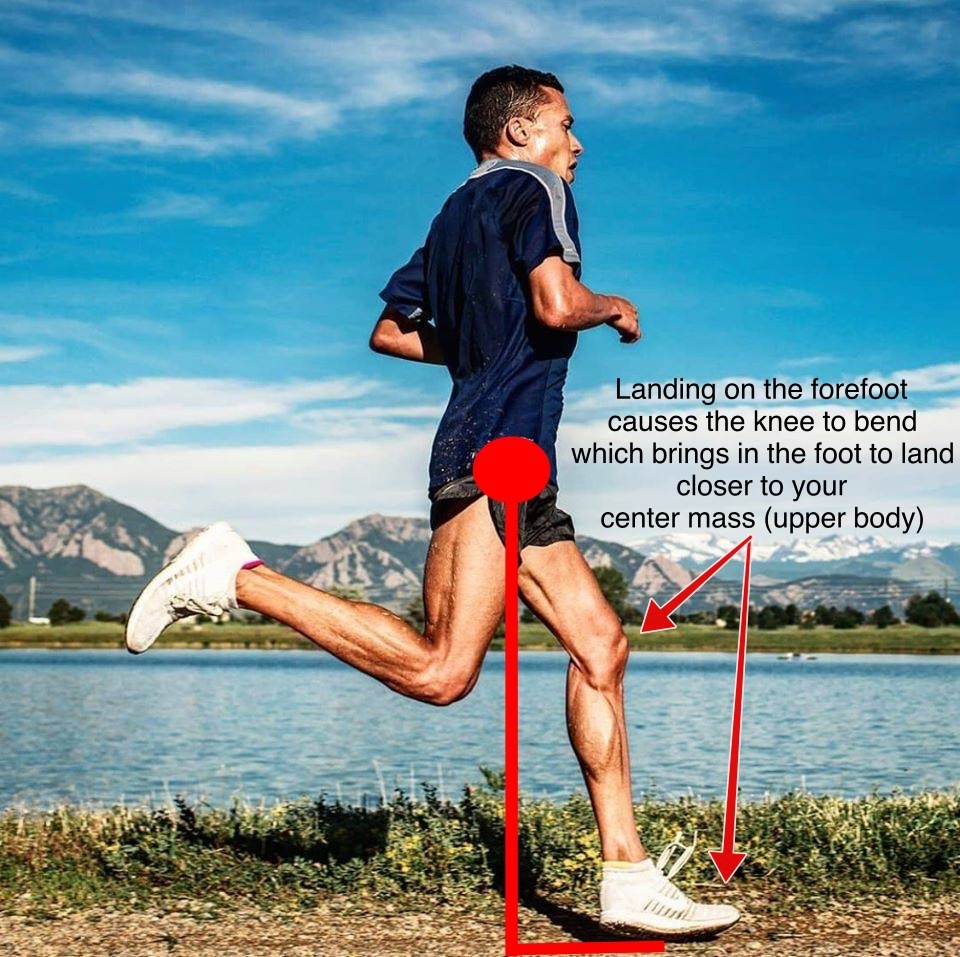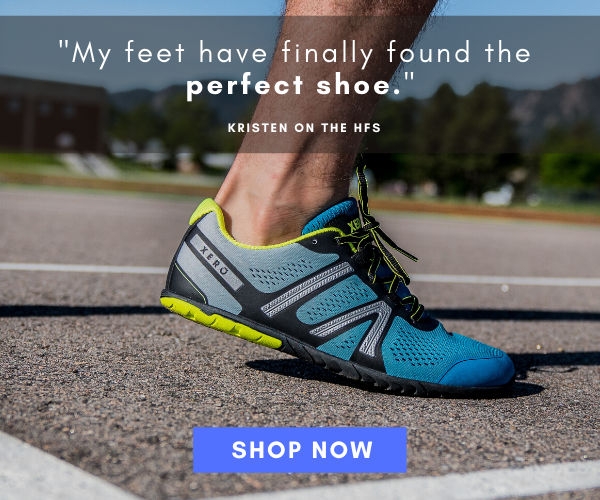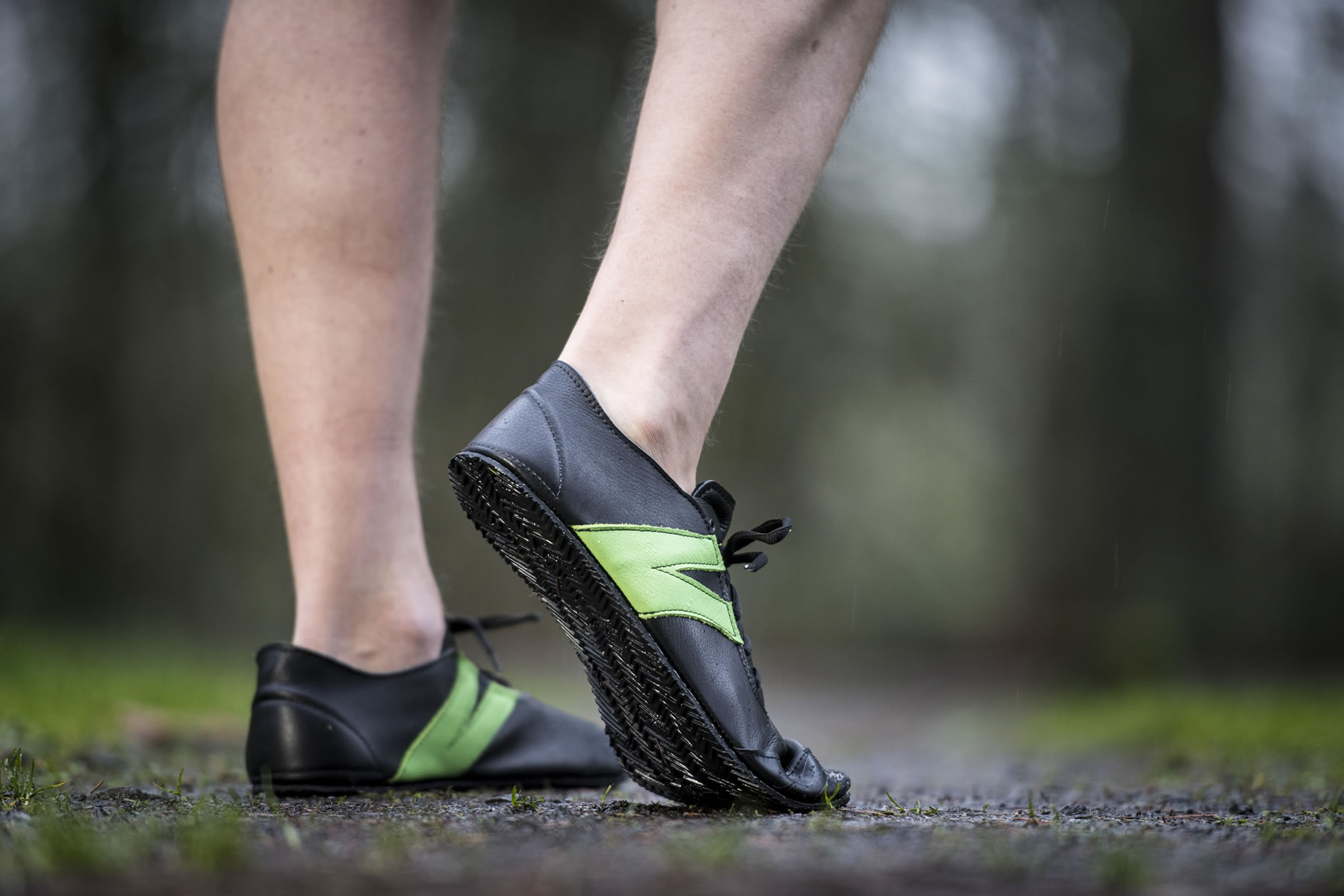One of the best changes to your running form is the forefoot strike, and it’s with a forefoot strike, not a heel strike, thats the proper foot landing while running in a minimalist shoe. This is because landing with a forefoot strike when running engages the foot, knees, hips and upper body in a safer, more functional manner than heel strike running. (click here to see what a proper forefoot strike landing looks like)


One problem is some runners who make the switch from thick cushioned running shoes to minimalist running shoes use a heel strike landing because they are in the dark about the importance of foot strike type in running whereby forefoot strike is well on record for being the safest, and most economical use of the foot when running.
A study in The American Academy of Physical Medicine and Rehabilitation, found that runners who landed heel-first in minimalist shoes had a higher risk of developing lateral knee injury because a vertical loading rate was produced in excess of 3 times greater than those who adopted a forefoot strike.
- A high-than-normal vertical loading rate, which is always the case in a heel strike landing, is responsible for lower leg injuries, such as tibial stress fractures (shin fracture), patello-femoral pain syndrome (runners knee) and plantar fasciitis (sore underfoot).

The Take Home Message
This post is a friendly reminder to always avoid heel strike, not just in minimalist shoes, but in any shoe, even thickly cushioned ones. In fact, heel strike running, even in cushioned running shoes, was found to be the biggest stressor that causes most severe injuries. That said, here’s well over 30 reasons heel strike running is the worst way to run!
Here are also all the evidence-backed reasons that minimalist shoes work for everyone at promoting exceptional foot health!

References:
Hreljac et al. (2000). Evaluation of lower extremity overuse injury potential in runners.
Willison et al. (2014). Short-term changes in running mechanics and foot strike pattern after introduction to minimalistic footwear.
Zhou et el. (2023). Effects of different contact angles during forefoot running on the stresses of the foot bones: a finite element simulation study.
Bretta Riches
BSc Neurobiology; MSc Biomechanics candidate, ultra minimalist runner & founder of RunForefoot. I was a heel striker, always injured. I was inspired by the great Tirunesh Dibaba to try forefoot running. Now, I'm injury free. This is why I launched Run Forefoot, to advocate the health & performance benefits of forefoot running and to raise awareness on the dangers of heel striking, because the world needs to know.
Latest posts by Bretta Riches (see all)
- Can You Run In Barefoot Shoes? Yes, But DON’T Heel Strike! - 21/07/2024
- Why Cushioned Running Shoes Are Really Bad for Your Feet - 19/07/2024
- Do Cushioned Running Shoes Cause Injuries? - 17/07/2024
